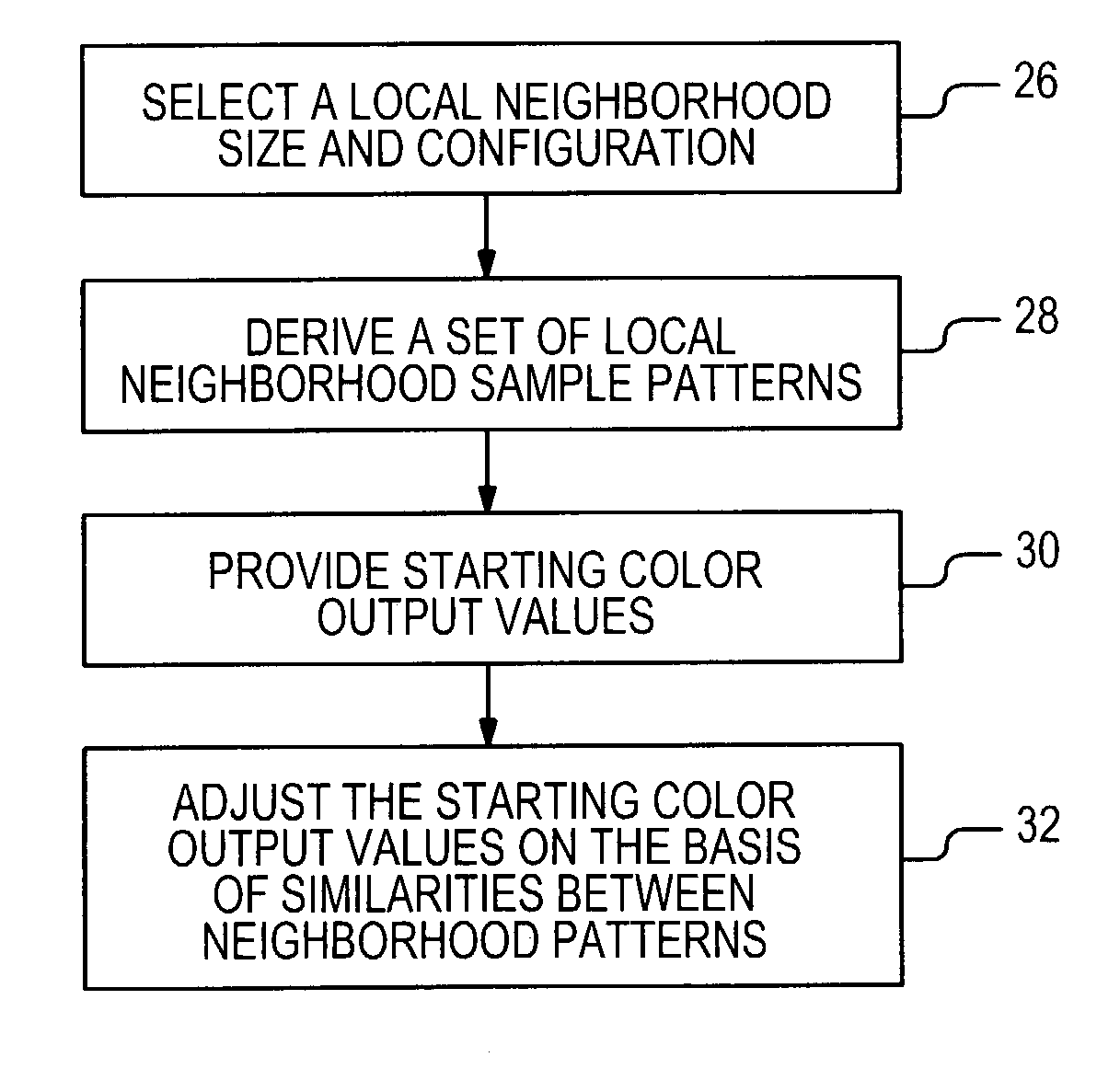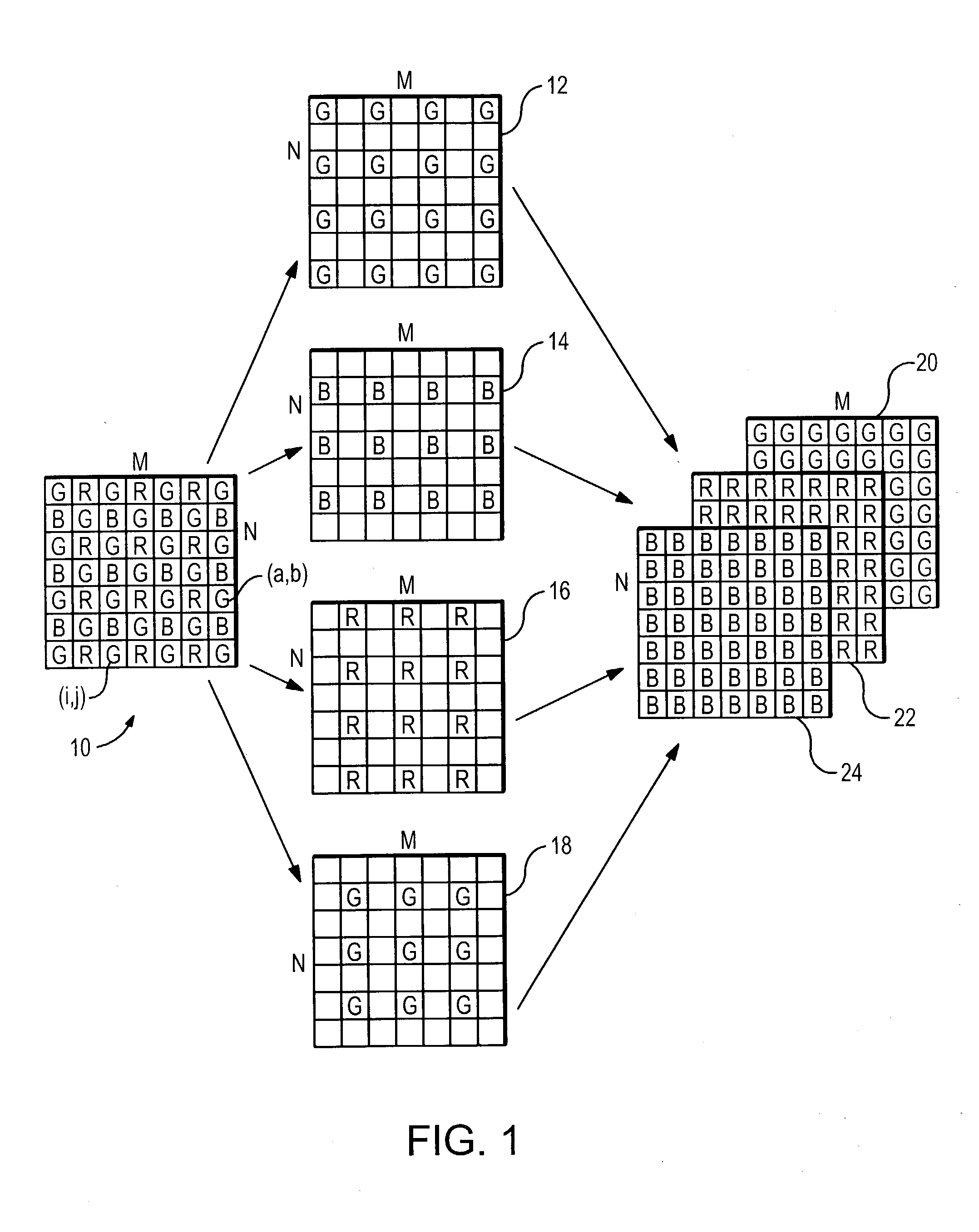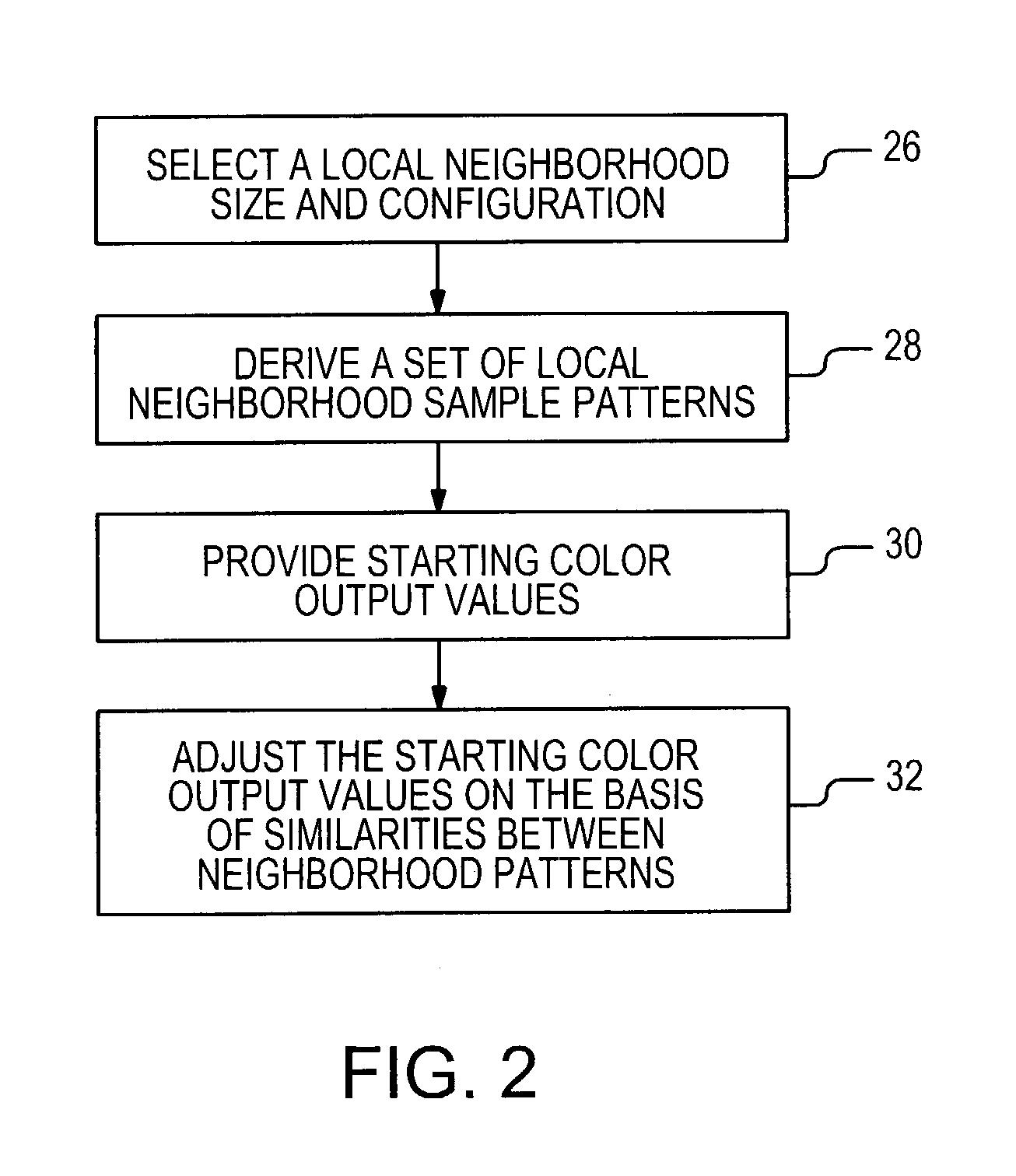Correlation-based color mosaic interpolation adjustment using luminance gradients
a color mosaic and luminance gradient technology, applied in image data processing, instruments, character and pattern recognition, etc., can solve the problems of reconstructed image often containing significant artifacts, digital cameras are limited to a single array of sensors, and color arrays do not produce color images in the traditional sense. , to achieve the effect of minimizing artifacts
- Summary
- Abstract
- Description
- Claims
- Application Information
AI Technical Summary
Benefits of technology
Problems solved by technology
Method used
Image
Examples
example of implementation
[0061]As one example of the implementation of the invention, FIG. 6 through FIG. 21 show different sets of reference patterns. Each even-numbered figure shows reference patterns 86 for one of the eight possible input-output configurations of the Bayer mosaic pattern, while each odd-numbered figure shows both the pattern sample locations 88 and the pattern output value assignments 90 for the preceding even-numbered figure. There are eight possible input-output configurations, since there are four different Bayer color sample types, with each having two interpolated center color outputs. The four different Bayer color sample types are:[0062](1) Red samples (R),[0063](2) Green samples in rows with red samples (GR),[0064](3) Green samples in rows with blue samples (GB), and[0065](4) Blue samples (B).
The patterns grouped according to their center sample colors are:[0066]R-Center Patterns={R-Center G-Output Patterns, (FIG. 6)[0067]R-Center B-Output Patterns}, (FIG. 8)[0068]GR-Center Patte...
PUM
 Login to View More
Login to View More Abstract
Description
Claims
Application Information
 Login to View More
Login to View More - R&D
- Intellectual Property
- Life Sciences
- Materials
- Tech Scout
- Unparalleled Data Quality
- Higher Quality Content
- 60% Fewer Hallucinations
Browse by: Latest US Patents, China's latest patents, Technical Efficacy Thesaurus, Application Domain, Technology Topic, Popular Technical Reports.
© 2025 PatSnap. All rights reserved.Legal|Privacy policy|Modern Slavery Act Transparency Statement|Sitemap|About US| Contact US: help@patsnap.com



